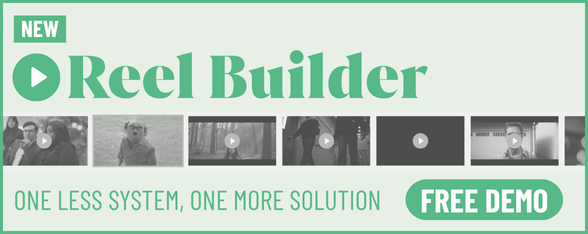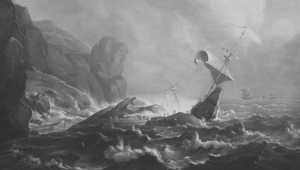
Producing Tomorrow’s Producers: Matthew Kahn on Why an Open Mind Is a Prerequisite for Growth

Matthew is the US managing director of global experiential production studio, HELO. Matthew’s creative career has led him to oversee award-winning experiences and content campaigns for brands such as Hulu, Santander Bank and Amazon Studios.
Previously of Crispin Porter Bogusky and Tool of North America before joining the HELO crew, Matthew has an extensive background in non-traditional integrated production, and has been a pioneering force in the experiential marketing landscape for over a decade.
LBB> What advice would you give to any aspiring producers or content creators hoping to make the jump into production?
Matthew> An inquisitive and open mind is a prerequisite for growth and advancement in production. The mediums and media outlets for which we produce work are constantly evolving, and you need to be willing to learn and adapt with the industry in order to make a career out of this profession.
LBB> What skills or emerging areas would you advise aspiring producers to learn about and educate themselves about?
Matthew> AR/VR Content, 3D Projection Mapping, AI Visualisations. While these are not the predominant production mediums for advertising or marketing at the moment, they will be what everyone is asking for in the near future.
LBB> What was the biggest lesson you learned when you were starting out in production - and why has that stayed with you?
Matthew> Never forget that production, at its core, is a service industry. Yes, we hire staff, organise the production, and oversee the project from brief to completion, but there is a large amount of understanding and managing personalities for both the client and/or agency as well as your internal team, to make sure your client and teams are happy. That means being comfortable taking on uncomfortable roles all in the name of a successful production, a proud team of staff, and a happy client.
LBB> When it comes to broadening access to production and improving diversity and inclusion what are your team doing to address this?
Matthew> HELO actively looks for candidates with diverse backgrounds and voices as a point of emphasis in our recruitment process. Representation across communities enables us to tell accurate and meaningful stories, and with diverse people come diverse creative ideas that are integral to the future success of our industry.
LBB> There are young people getting into production who maybe don’t see the line between professional production and the creator economy, and that may well also be the shape of things to come. What are your thoughts about that? Is there a tension between more formalised production and the ‘creator economy’ or do the two feed into each other?
Matthew> There is a cordial, not quite symbiotic, relationship between formal productions and the “creator economy” as they offer different products essentially, the former being more traditional content from agencies and the latter being more influencer media buys. However, for most brands and agencies both the cost for traditional production and the ‘creator economy’ are cut from the same budget, so the two divergent content mediums will become increasingly adversarial with every change in budget moving forward, particularly as long as influencer and creator culture continues to increasingly bring more and more brand awareness and brand equity for a client.
LBB> If you compare your role to the role of the heads of TV/heads of production/exec producers when you first joined the industry, what do you think are the most striking or interesting changes (and what surprising things have stayed the same?)
Matthew> The diversification of content and marketing mediums is probably the most striking change. 15 years ago, when I started, it was basically broadcast commercial content, OOH, Print, and the last breath of Radio/infancy of digital marketing. Nowadays a brand needs to have broadcast commercial content, social content, their own branded (lifestyle) content for YouTube & Reels, big experiential marketing presence, digital advertisements - banner ads, :06’s &:12’s for internet TV, integrated marketing, etc. And we as producers need to learn how to produce all of it as new mediums arise or be prepared to be left in the dust.
LBB> When it comes to educating producers how does your agency like to approach this? (I know we’re always hearing about how much easier it is to educate or train oneself on tech etc., but what areas do you think producers can benefit from more directed or structured training?)
Matthew> Weekly the production department meets to discuss our favourite projects we’ve seen that week, emerging technologies that we’re intrigued by, or any new “thing” that can or will influence marketing moving forward. Additionally, we encourage our staff producers to attend at least one conference per year about new technology and/or emerging production mediums to sharpen their production mind and skill further.
LBB> It seems that there’s an emphasis on speed and volume when it comes to content - but to where is the space for up and coming producers to learn about (and learn to appreciate) craft?
Matthew> I always say there’s fast, good, and cheap – you almost always can get two out of three but never all three. More often than not these days, the brief is for social content made in response to a cultural occurrence on social media, and the Brand needs to produce quick content in response to fall within the “cultural calendar”. Because of the speed at which you need to work to produce the content, a client will either throw in the additional necessary funds to make it ‘good’ or be willing to sacrifice some level of quality to finish in time and at a particular cost, aka “cheap”. Some clients will pick “good” over “cheap” and vise-versa depending on their priorities; it is on the producer to understand those priorities and seize on the opportunity to get experience in either circumstance. That is actually applicable to all projects for a producer - each project should be considered and taken in as a learning opportunity to better your craft.
LBB> On the other side of the equation, what’s the key to retaining expertise and helping people who have been working in production for decades to develop new skills?
Matthew> Investing in them as people and positive reinforcement have been key for HELO in growing and retaining staff. We empower all employees who walk through our doors to seek out knowledge and point out projects or emerging tech that interests them and would be beneficial for HELO to invest interest or resources in.
LBB> Clearly there is so much change, but what are the personality traits and skills that will always be in demand from producers?
Matthew> I ask the same question in every interview - if you are laying in bed at night knowing you need to respond to a client email by the start of business the next day, do you (A) respond before you go to sleep or (B) wait to respond in the morning? I want the producer who is so anxious about not responding that they “need” to email that night or can’t. That “ anxiety” is what the best producers have.















